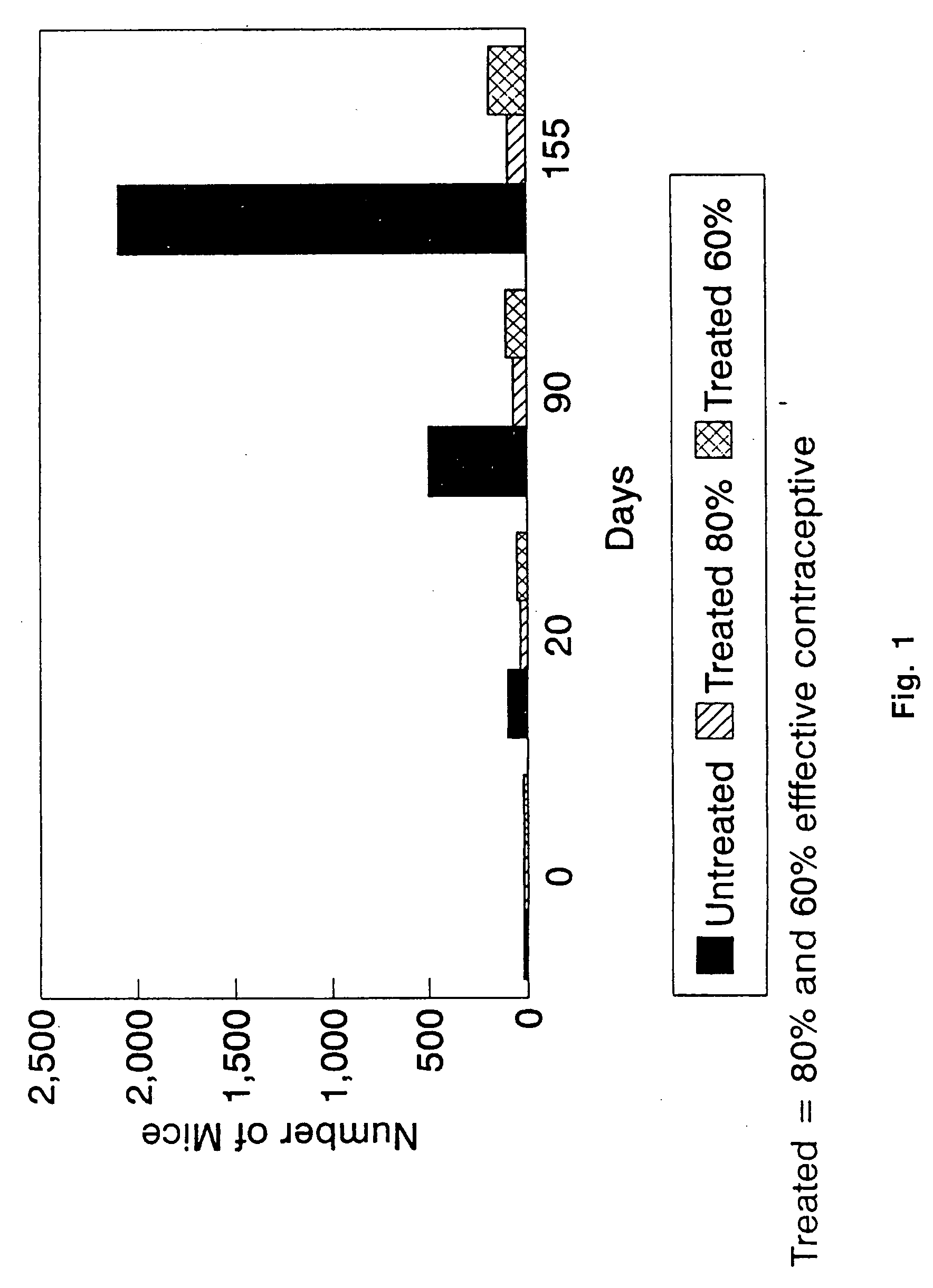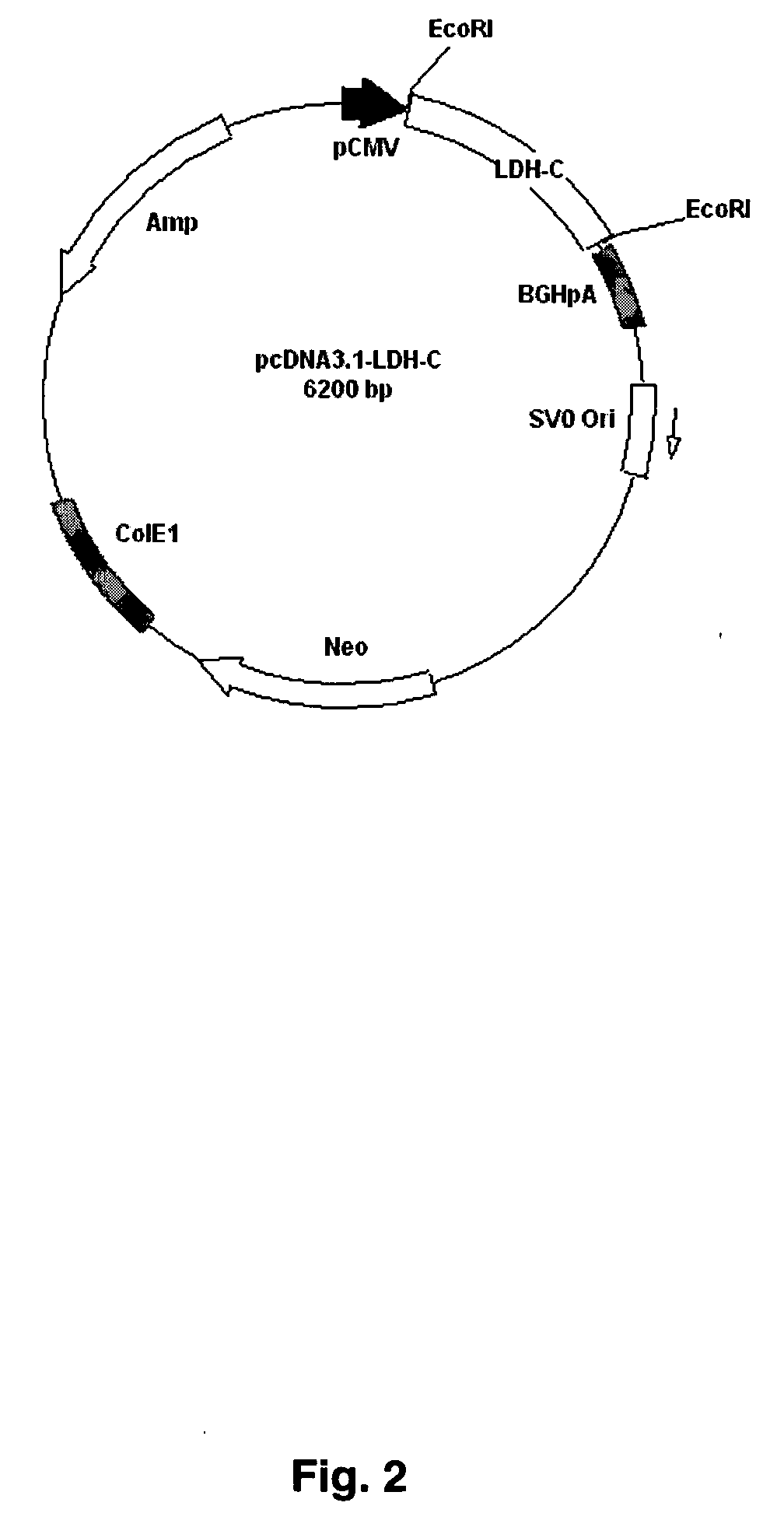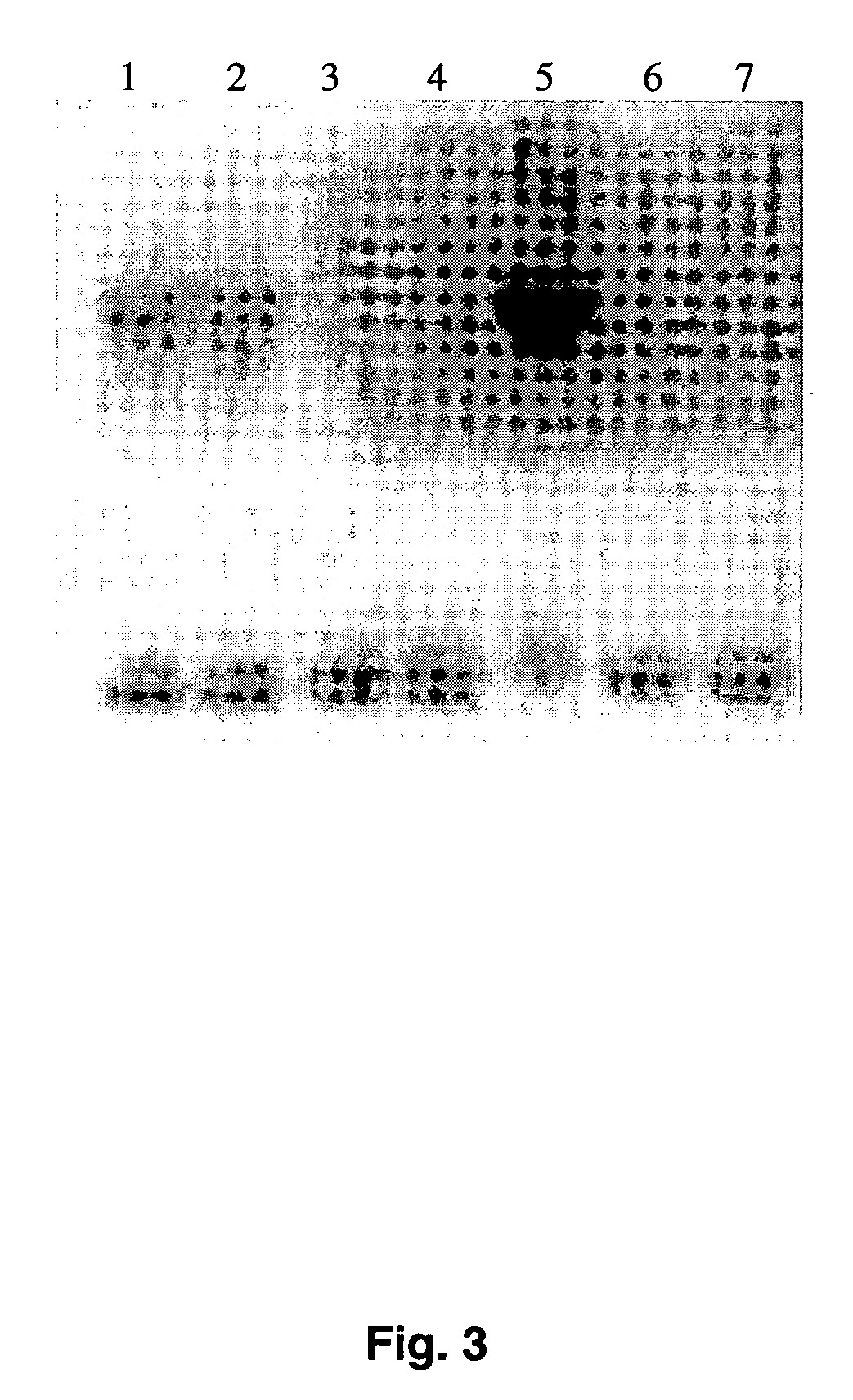DNA immunocontraceptive vaccines and uses thereof
a technology of immunocontraceptive vaccines and plasmids, which is applied in the field of immunocontraceptive vaccines, can solve the problems of spreading fatal diseases to people and domestic animals, damage, and mass destruction of crops and foodstuffs, and achieves the effects of easy modification, high toxicity, and substantial cost reduction
- Summary
- Abstract
- Description
- Claims
- Application Information
AI Technical Summary
Benefits of technology
Problems solved by technology
Method used
Image
Examples
example 1
Construction of DNA Vaccine Vector
[0073] The creation of a DNA contraceptive required the construction of appropriate plasmid vaccine constructs. In this case, two vectors were considered: one encoding the entire cDNA sequence of mouse lactate dehydrogenase-C and one encoding a derived antigenic peptide of lactate dehydrogenase-C. The vector of choice was pcDNA3.1 since it features a strong mammalian promoter from the cytomegalovirus and other features that increase gene expression in mammalian cells.
pcDNA3.1-LDH-C
[0074] The pcDNA3.1-LDH-C, designed to express the compete lactate dehydrogenase-C sequence, was provided by Dr. Erwin Goldberg from Northwestern University and no further modification was performed with this construct. A map of the vector is shown in FIG. 2. This plasmid contains the cDNA of mouse lactate dehydrogenase-C between two EcoRI sites. The plasmid was transformed into XL-1 blue electrocompetent cells (Stratagene). The plasmid was isolated using the Quiaprep...
example 2
Expression of DNA Vaccine Vector In Vitro
[0077] Before going into animal vaccine trials, attempts were made to express the antigen in vitro by transfecting the vectors into mammalian cells and testing for expression. The first step in the experiment was to develop a standardized protocol for plasmid transfection. This was accomplished by using the appropriate cell lines and the appropriate vectors. The cell line chosen was the COS-7 cells. This mammalian cell line has been designed to maximize protein expression in transfection experiments and has been widely described in numerous successful transformations.
[0078] For the control, plasmid pcDNA3.1-GFP (green fluorescent protein) was chosen since not only is the vector identical to the vaccine candidates, but direct visualization of protein expression can be easily performed and quantified under an epifluorescence microscope.
[0079] The transfection method that was used involved the use of lipid-DNA complexs; in particular, the Li...
example 3
Expression of DNA Vaccine Vector in Salmonella
[0082] Both constructs described above (pcDNA3.1-LDH-C and pcDNA3.1-SPV) were considered as the vaccine candidates to be tested. The pcDNA3-GFP was used as a negative control. The plasmids were transformed into Salmonella typhimorium strain SL3261. The Salmonella were subsequently grown without aeration and with high salt concentrations (regular LB medium plus 1.5%). Under these conditions, the Salmonella up-regulate the expression of a series of genes in the pathogenicity islet portion of the chromosome that help the bacteria increase its infectivity. This has the effect of making better vaccine candidates, as the attenuated bacteria become more intrusive without turning more pathogenic. Salmonella that has been grown under this environment will emit a strong putrid odor characteristic of infective bacteria.
[0083] Under these conditions, the Salmonella take several days to achieve acceptable numbers of bacteria in the cultures. This ...
PUM
| Property | Measurement | Unit |
|---|---|---|
| Antigenicity | aaaaa | aaaaa |
Abstract
Description
Claims
Application Information
 Login to View More
Login to View More - R&D
- Intellectual Property
- Life Sciences
- Materials
- Tech Scout
- Unparalleled Data Quality
- Higher Quality Content
- 60% Fewer Hallucinations
Browse by: Latest US Patents, China's latest patents, Technical Efficacy Thesaurus, Application Domain, Technology Topic, Popular Technical Reports.
© 2025 PatSnap. All rights reserved.Legal|Privacy policy|Modern Slavery Act Transparency Statement|Sitemap|About US| Contact US: help@patsnap.com



